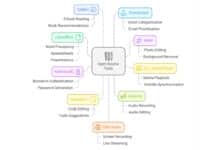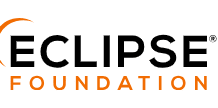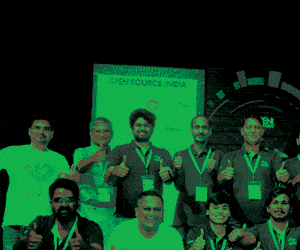Aiming to become a top-class software developer? Then you need to arm yourself with a few best practices including collaboration with the major stakeholders and incorporating user feedback.
As new programming languages, frameworks, and tools emerge, developers strive to stay up-to-date with the latest best practices to improve their coding skills and deliver high-quality software products. The good news is that there are some best practices that can help coders and developers stay ahead of the curve. These include writing optimised code, employing automated testing, and using modern software development tools and methodologies. Then there are the benefits of adopting agile development techniques, incorporating continuous integration and delivery, and leveraging cloud-based infrastructure. By implementing these practices, developers can improve their skills, speed up the development process, and deliver high-quality solutions that meet the needs of modern businesses.
Importance of efficient coding practices
As technology continues to evolve, coding and development practices must adapt to keep up with the latest trends and innovations. The best and modern practices for coders and developers include the following.
Agile development: This involves an iterative and collaborative approach to software development, focusing on constant feedback and adaptation to changes in requirements.
DevOps: This practice combines development and operations to ensure streamlined processes for software development, testing, and deployment.
Test-driven development: This involves writing automated tests before writing code, ensuring that code is thoroughly tested and meets all requirements.
Continuous integration and delivery: This practice involves regularly integrating code into a shared repository and deploying the latest version to production.
Microservices architecture: This involves breaking down an application into smaller, independent services, making it easier to manage and scale.
Containerisation: This practice involves packaging an application and its dependencies into a container, making it easy to deploy and run on any platform.
Cloud computing: This involves using cloud platforms like AWS or Azure for hosting and scaling applications, leveraging the power of the cloud for optimal performance and cost-effectiveness.
Code review: This involves having multiple developers review each other’s code, ensuring that code is well-written, efficient, and adheres to coding standards.
By implementing these best and modern practices, developers can create high-quality software that meets the needs of their users and keeps pace with the rapidly changing technological landscape.
Best practices for developers
Use of agile methodologies
Agile methodologies incorporate a set of practices and values that prioritise flexibility, collaboration, and iterative development to quickly respond to changing requirements and feedback. In software development, agile methodologies have become increasingly popular to improve team efficiency, reduce risk, and deliver high-quality products. Here are some of the best practices for utilising agile methodologies in software development.
Team collaboration: Agile methodologies emphasise teamwork, open communication, and collaboration. Team members from different disciplines work together to ensure that the requirements are appropriately scoped, development tasks are prioritised, and testing and deployment are coordinated.
Scrum: Scrum is an agile framework that helps with implementing these best practices. It consists of a product owner, scrum master, and development team that works together within a fixed timeframe (sprint) to deliver the product. The scrum team holds regular meetings (daily stand-ups, sprint planning, sprint reviews) to manage workflows, assess progress, and identify ways to improve.
User feedback: Agile methodologies prioritise user feedback and testing from the project’s inception. This feedback is used to inform product development teams, ensure user satisfaction, and reduce waste when addressing defects.
Flexible planning: Agile planning is adaptive and iterative. Workflows, tasks, and features are continually refined and optimised based on user feedback and changing requirements. The agile process enables a team to respond effectively to shifting business needs without causing any significant delay in development.
Continuous integration and delivery: Agile methodologies emphasise continuous integration and delivery. This practice involves frequently testing and integrating new code into the main codebase and deploying changes to the production environment. This process helps reduce risk and mitigate potential production issues.
Data-driven decision making: Agile teams rely on data to make informed decisions about the development process. The use of data encompasses everything from user feedback collected through A-B testing, metrics on feature usage, error rates, and even process improvement measures to ensure that the team is delivering constant value.
Overall, agile methodologies are an excellent way for developers to improve their best practices. They help the team collaborate, organise and deliver value with speed and agility while mitigating risk.
Collaboration with non-technical stakeholders
Collaboration with non-technical stakeholders refers to the process of working together with individuals who are not IT professionals or experts in the technical aspect of a project. These stakeholders are typically involved in decision-making, planning, and implementation of a project. They may include business owners, clients, end users, or any other stakeholder who is not technical but has a significant impact on the project.
Effective collaboration with non-technical stakeholders requires clear communication, active listening, and a thorough understanding of their vision, goals, and requirements.
One of the key benefits of collaborating with non-technical stakeholders is that it provides a diverse perspective and can help identify blind spots in the technical team.
To collaborate effectively with non-technical stakeholders, technology teams should:
- Establish clear communication channels and protocols
- Identify the stakeholders’ needs, goals, and priorities
- Develop a shared understanding of technical terminology and concepts
- Provide regular updates on project progress and milestones
- Create opportunities for stakeholder feedback and input
By working with non-technical stakeholders, technology teams can build better solutions that meet the needs of the business and end users.
Incorporating user feedback
Developers should prioritise user feedback as it plays a crucial role in improving the user experience. Here are some best practices for incorporating user feedback in the development process.
Collect user feedback: Developers should actively solicit user feedback through various channels such as surveys, social media, and online forums. This feedback should be collected at different stages of the development process to ensure that user needs are being addressed.
Organise feedback: Developers should organise the feedback collected in a structured way for easy identification and analysis of common patterns and themes. Tools such as spreadsheets, databases, and user feedback management systems can be useful.
Analyse feedback: The feedback collected should be analysed to identify the areas that require improvement. This can help prioritise areas that need improvement and avoid wasting time on low-impact issues.
Implement changes: After analysing user feedback, developers should implement the changes into the system. It is essential to test the changes before releasing the updated version to ensure that the issue has been resolved.
Communicate changes: Developers should communicate the changes made to the users to show that they are listening to user feedback and constantly working to improve their products.
Repeat the process: Developers should continue to collect and incorporate user feedback in their development process. This will ensure that their products continue to meet the needs of their users and remain relevant in the market.
Integration and automation
Integration and automation help to streamline the process of building, deploying, testing, and monitoring software applications, leading to more efficient workflows, better product quality, and faster delivery times.
Integration in software development involves combining different components and systems into a cohesive whole. This can include integrating third-party applications, database management systems, runtime environments, and other tools into the development process. Integration is essential because it helps developers to leverage existing resources and capabilities, reducing the time and effort required to build and test new features.
Automation in software development involves the use of programmed scripts and tools to automate recurring tasks. Automation can range from simple tasks like code formatting and testing to more complex processes like continuous integration and deployment. It helps to improve the speed and accuracy of software development while reducing human error and freeing up developer time for more creative tasks.
Together, integration and automation provide the following benefits for developers.
Faster development cycles: Automation reduces the time required to perform repetitive tasks, allowing developers to focus on more complex and challenging aspects of the development process.
Reduced errors: Automation reduces the risk of human error, leading to fewer bugs and better quality products.
Improved collaboration: Integration allows for different teams and stakeholders to work together more effectively, enabling better communication and collaboration across the development process.
Increased scalability: Integration and automation make it easier to scale development efforts up or down as needed, ensuring that software development processes remain aligned with business needs.
In summary, integration and automation are critical components of best practices for developers, enabling them to increase efficiency, reduce errors, improve collaboration, and scale development efforts as needed.
Security and privacy considerations
Security and privacy are crucial in developer best practices. The following points explain why they are essential and what developers can do to ensure they are adequately addressed.
Protect against cybersecurity threats: Developers should understand and protect against the risks posed by cybersecurity threats. Threats include viruses, worms, Trojan horses, phishing, and social engineering attacks. They should be aware of the latest threats and best practices to protect their code and applications.
Follow data privacy regulations: Developers need to follow data privacy regulations to protect user data. Guidelines such as the General Data Protection Regulation (GDPR) and the California Consumer Privacy Act (CCPA) require developers to ensure that user data is handled appropriately. Developers need to understand the legal requirements and implement the necessary measures to comply.
Use secure coding practices: Developers should use secure coding practices to prevent vulnerabilities in their code. Techniques such as input validation, cryptography, and input sanitisation can help prevent attacks such as injection attacks and cross-site scripting (XSS). Developers should continuously review their code for vulnerabilities and patch any issues.
Conduct security testing: Developers should conduct security testing to identify and address any vulnerabilities in their code. Testing can include static code analysis, dynamic testing, and penetration testing. Developers should work with security experts to conduct security testing to ensure comprehensive coverage.
Implement access controls: Developers should implement access controls to ensure that only authorised users can access their applications. These can include password policies, user identification, and role-based access controls. Developers should test their access controls to ensure that they are effective and work as intended.
| A summary of key coder and developer best practices |
|
Importance of staying up to date with modern practices
Developers need to be in tune with the latest tools, techniques, and programming paradigms to stay relevant and competitive. Here are some key reasons why this is crucial.
Improved efficiency: Modern practices and tools often come equipped with features that can help developers work more efficiently. For instance, newer programming languages like Rust and Kotlin offer better performance and reduced coding errors, thereby saving time and effort.
Enhanced productivity: By adopting modern development practices, developers can improve their productivity. For example, DevOps practices facilitate continuous integration and delivery, enabling teams to release software faster and more frequently. As a result, businesses can respond to changing customer needs and market trends quickly.
Better user experience: Keeping up with modern practices helps developers create more user-friendly applications. For instance, they can incorporate responsive design principles, accessibility features, and other UX best practices into their work.
Competitive advantage: Companies that embrace contemporary development practices gain a competitive edge by staying relevant and offering attractive solutions to customers. Developers who stay current with modern tools and techniques become more marketable and valuable to their employers.
Security: By staying up to date with modern practices, developers can address security concerns more effectively. For instance, they can incorporate secure coding principles into their work and leverage the latest security tools to protect sensitive data.
By embracing new technologies, tools, and programming paradigms, coders can improve their productivity, create better applications, and enhance the overall user experience.












































































